We were a bit apprehensive after the 2011 field season. There had been significant melting and hundreds of finds. If the melting continued at that rate, we would become overwhelmed. However, 2012 proved to be a different story. A large amount of snow fell in late winter across the western parts of our mountains. By the start of the field season in August, winter snow was still covering the ice patches in most of our survey area. We decided to cut back on fieldwork and were relieved that both the ice and we got a breather in 2012.
We still managed to conduct some fieldwork, including an exploratory survey in the southern Jotunheimen Mountains, a systematic survey at the small Trollsteinhøe site, which contains many scaring sticks, and a smaller survey at Lendbreen.
The core field crew this year consisted of Elling Utvik Wammer, Julian Post-Melbye, and Lars Pilø. Jostein Bergstøl from the Museum of Cultural History and James H. Barrett from Cambridge University joined part of the fieldwork.
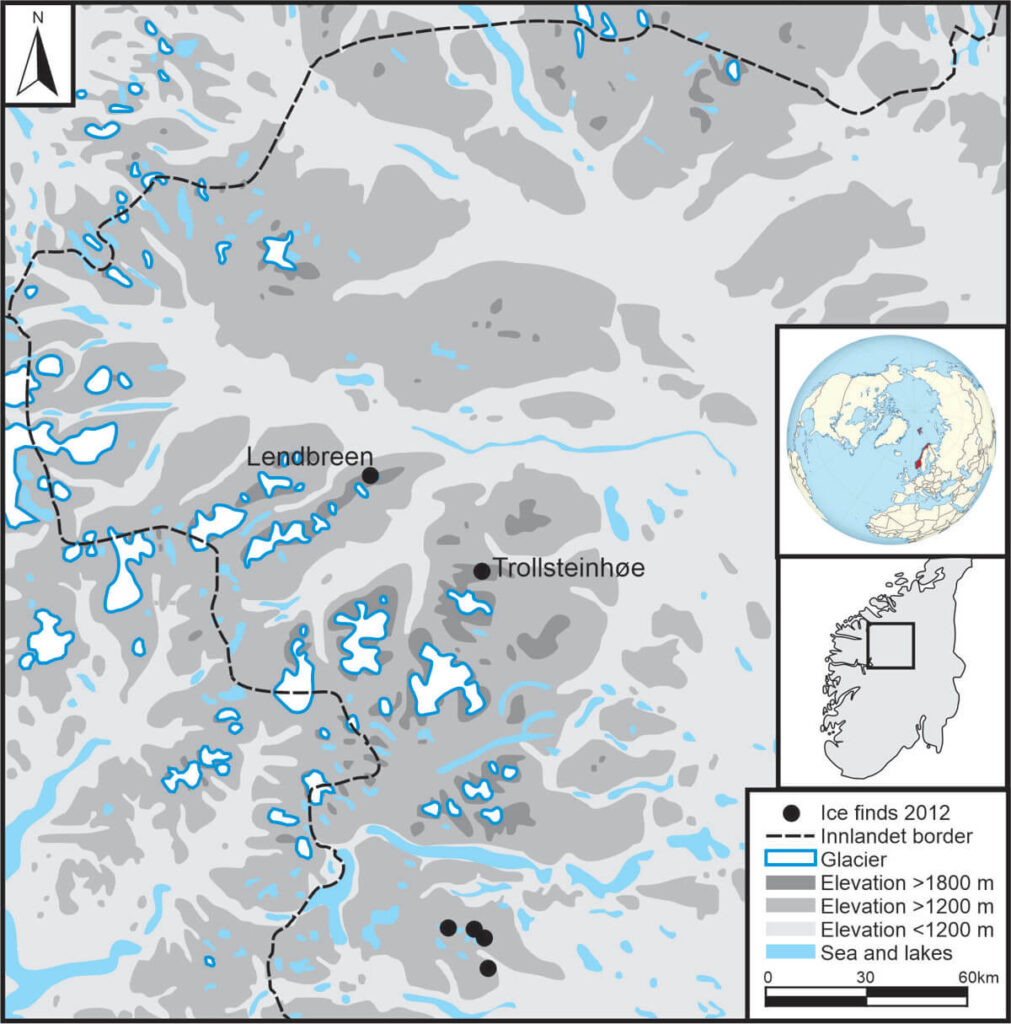
Vennis Mountains
We decided to begin the fieldwork in mid-August in a small part of the southern Jotunheimen Mountains, known locally as Vennisfjellet. This is where Jostein had discovered the Viking Age cargo net the previous year.
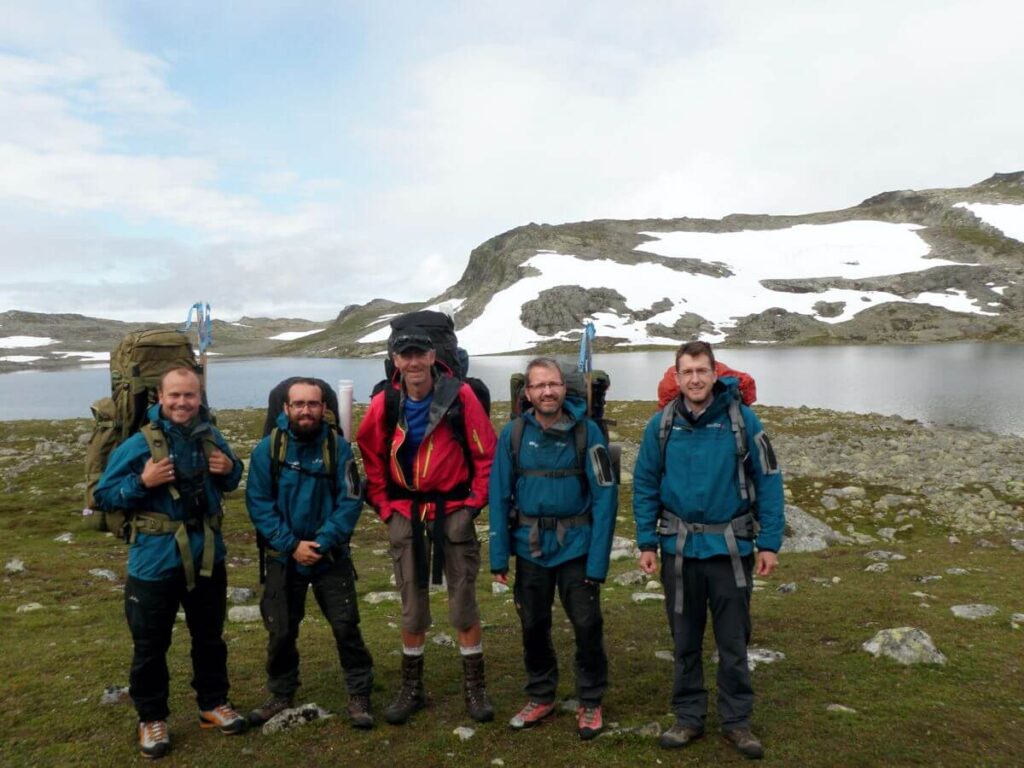
Due to the heavy snow conditions, the survey proved challenging, but we managed to identify three new sites during our exploratory work. However, the finds consisted mainly of poorly preserved pieces of wood. These were artefacts that had been out of the ice for a long time. We could observe stone-built hunting blinds near many of the ice patches, which suggested that reindeer hunting had taken place there in the past, even if there were no finds in 2012. All in all, the survey provided us with a better understanding of this mountain range and its ice patches. This would prepare us for a return when survey conditions became more favourable.
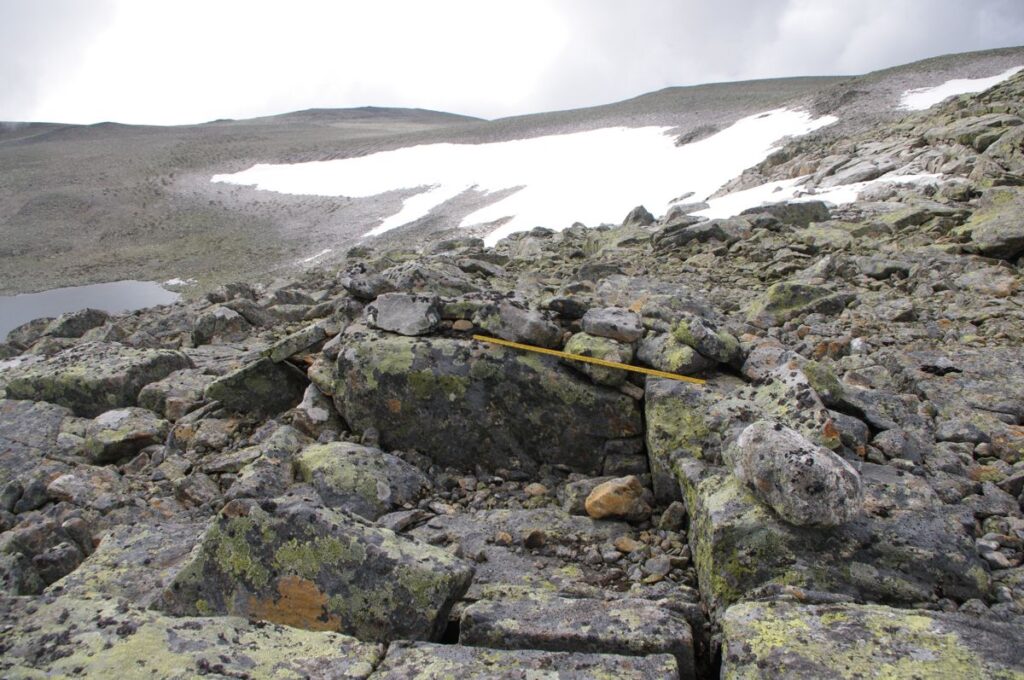
Trollsteinhøe Ice Patch
We had discovered hundreds of scaring sticks at a small ice patch in the Trollsteinhøe massif during an exploratory survey the previous year. While the team was in the field at Vennisfjellet, Espen Finstad and Reidar Marstein visited the Trollsteinhøe site to assess the snow conditions. They reported that conditions were suitable for a systematic survey.
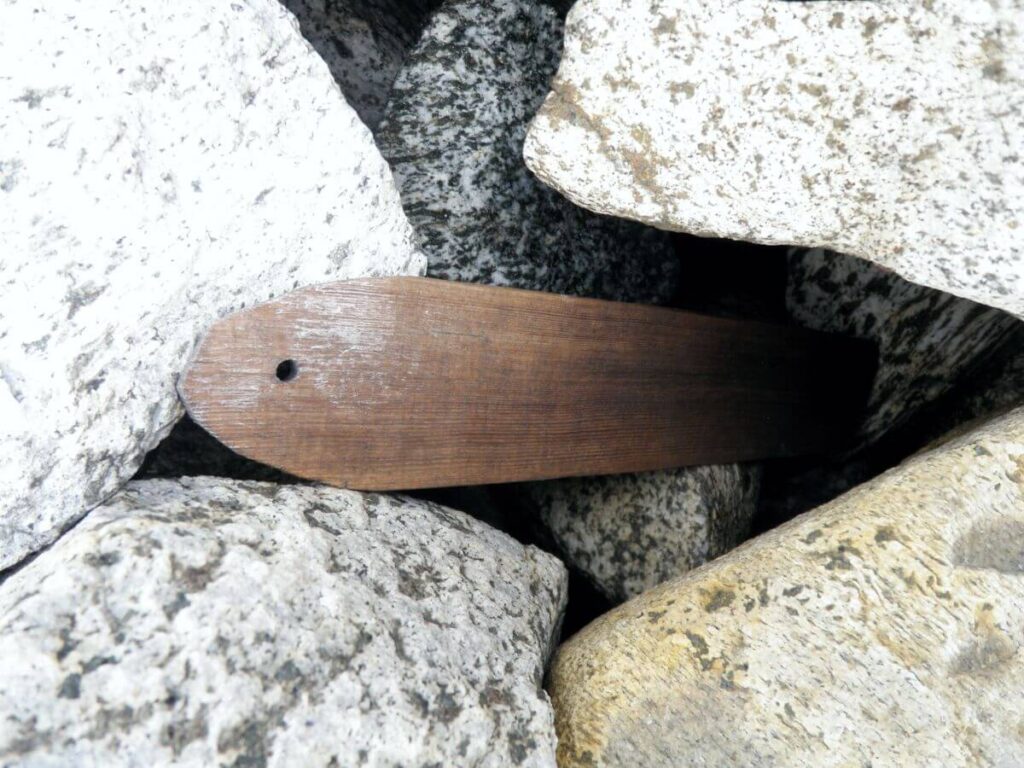
A week later, we returned to Trollsteinhøe to begin the systematic survey. There were so many finds that we were unable to collect them all. Instead, we recorded the location of each find and collected some of the objects. Among the recovered items were scaring stick flags and sticks with string still attached. We revisited the site several times over subsequent years and eventually succeeded in collecting all the finds, which totaled around 450 artefacts. This enters the site into our top 5 ice site list for the number of finds.

In addition to the scaring sticks, we recovered a large number of reindeer antlers from the site in 2012. Reindeer bones and antlers have significant research potential, particularly as a source for ancient DNA. This allows studies of reindeer population genetics and species evolution.
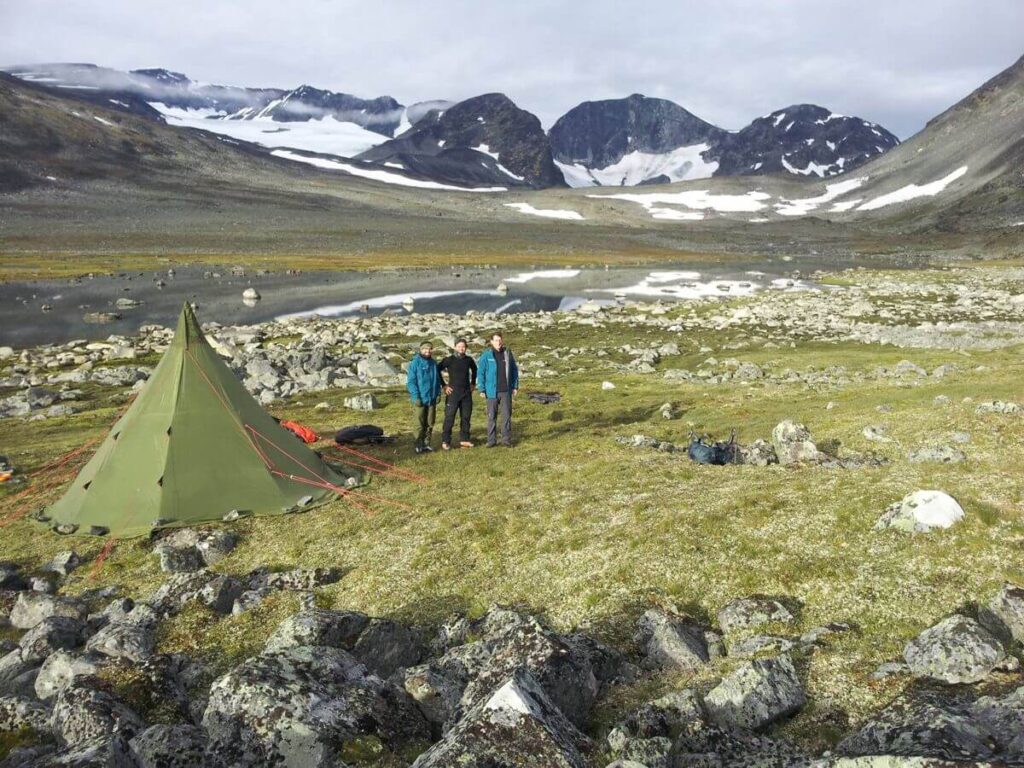
Documentary Film
During our survey at Trollsteinhøe, we were visited by the Norwegian national broadcaster (NRK). They filmed our work for a documentary series titled The Archaeologists, inspired by the British Time Team series. You can watch our episode here. It is in Norwegian but provides an excellent impression of the Trollsteinhøe site and its finds. The episode also features visits to Lendbreen and Juvfonne and discoveries there.
Lendbreen
At the end of August, the team hiked up to Lendbreen to conduct a systematic survey along the eastern edge of the ice patch. This was the remaining sector for the completion of the survey around the ice patch. Andrew Curry, a journalist from The Archaeology Magazine, joined us. We struggled with stormy weather, which caused one of our tents to collapse and forced us to take down another. This left us with very cramped conditions in the two remaining tents.
The weather continued to be rough, with strong winds and horizontal sleet, so we were unable to carry out much of the planned survey during our stay at Lendbreen. However, on the eastern slope, we found two interesting pieces of wood. They had clearly once belonged together, as the wood grain and shape matched. They were evidently part of a larger object. Later, in the lab at the Museum of Cultural History, we discovered that we already had a third piece of this object, which had been found the previous year, 250 metres further up the slope. When we fitted the three pieces together, it became apparent that they were the remains of a ski!
In 2013, we found a fourth piece of the ski, although it remains incomplete. Radiocarbon dating revealed that the ski dated to the Late Bronze Age. You can read more about the ski here.
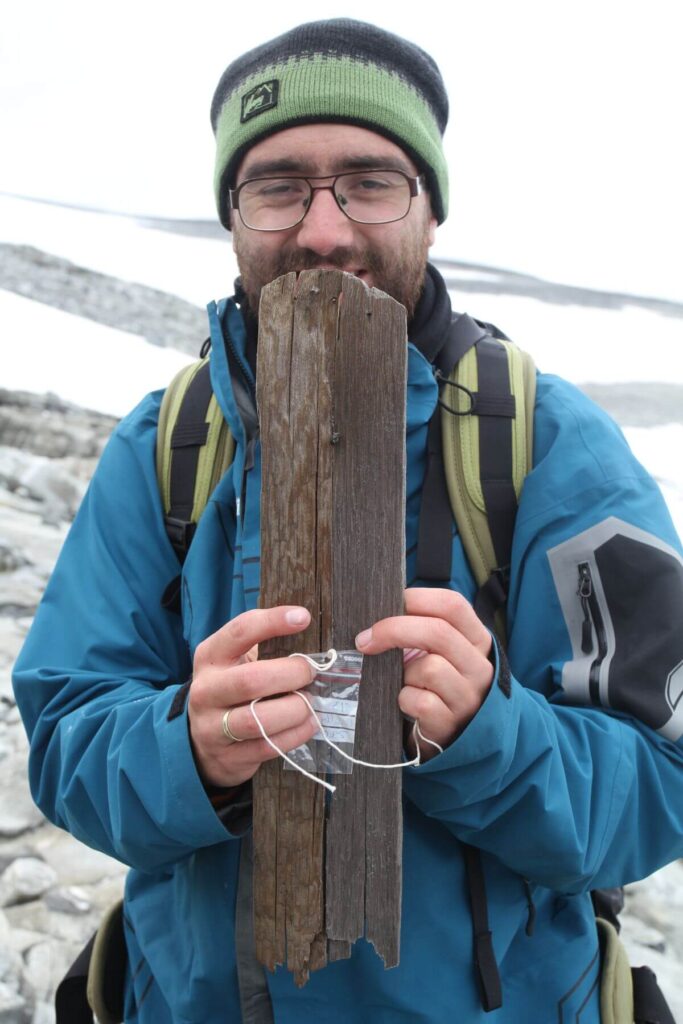
Curry’s Archaeology Magazine article remains one of the best media pieces published about our work. You can read it here: The Big Melt.
Climate Park
The ice tunnel in the Climate Park at the Juvfonne ice patch had melted the previous year due to the warm temperatures. In April and May 2012, a new, deeper ice tunnel was carved into the ice patch, once again involving ice artist Peder Istad. It was officially opened in June by Cabinet Minister Rigmor Aaserud, demonstrating the continued political interest in both our programme and our outreach efforts. The 2012 ice tunnel remains open to the public, although it has lost ice near the entrance.
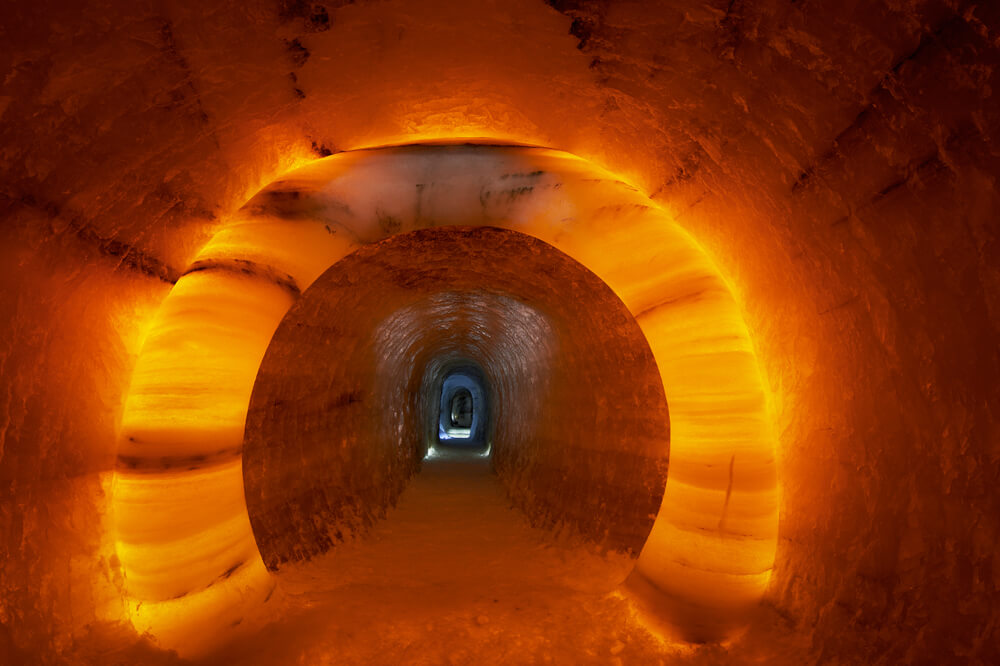
In June 2012, a small exhibition of our finds opened at the Norwegian Mountain Museum in Lom, and County Mayor Audun Tron officially opened the exhibition.
Scientific paper
We published a scientific paper in the journal The Holocene in 2012, where we had an early look at the climatic significance of our finds from the ice. The paper was later cited in one of the IPCC reports.
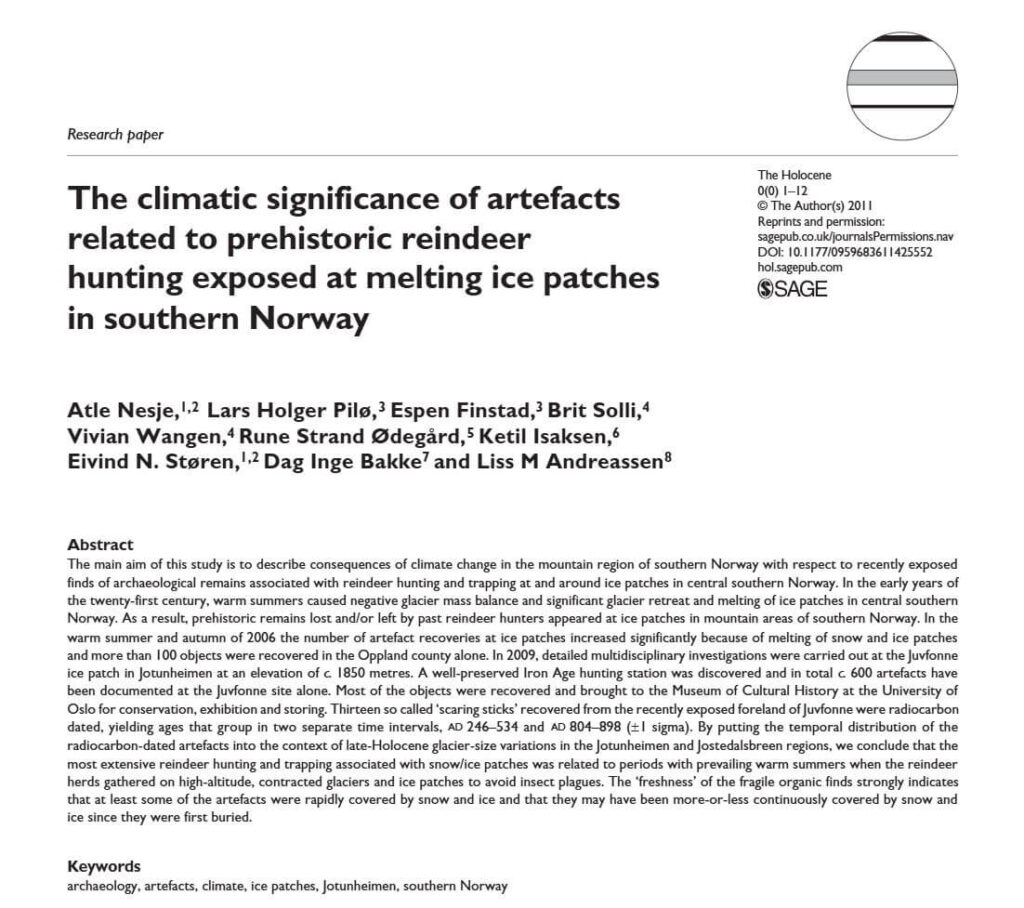
Summing up 2012
2012 was a difficult year for glacial archaeology her in Innlandet, as quite a lot of the winter snow in the high mountains survived the summer melt. This led to a scaling-back of fieldwork, which was actually a relief after the heavy melting of 2011. In was also a practical reminder that the ice melt would not continue in a gradual and linear fashion. Instead, the amount of ice and snow would vary from year to year with the trendline clearly pointing down – just like the Arctic sea ice.
